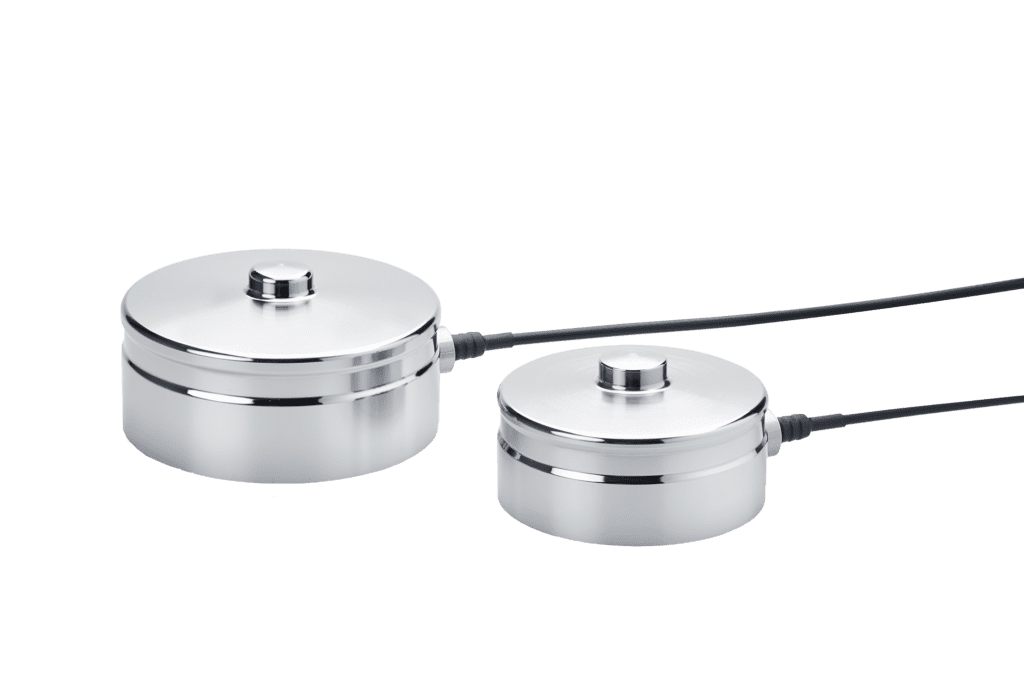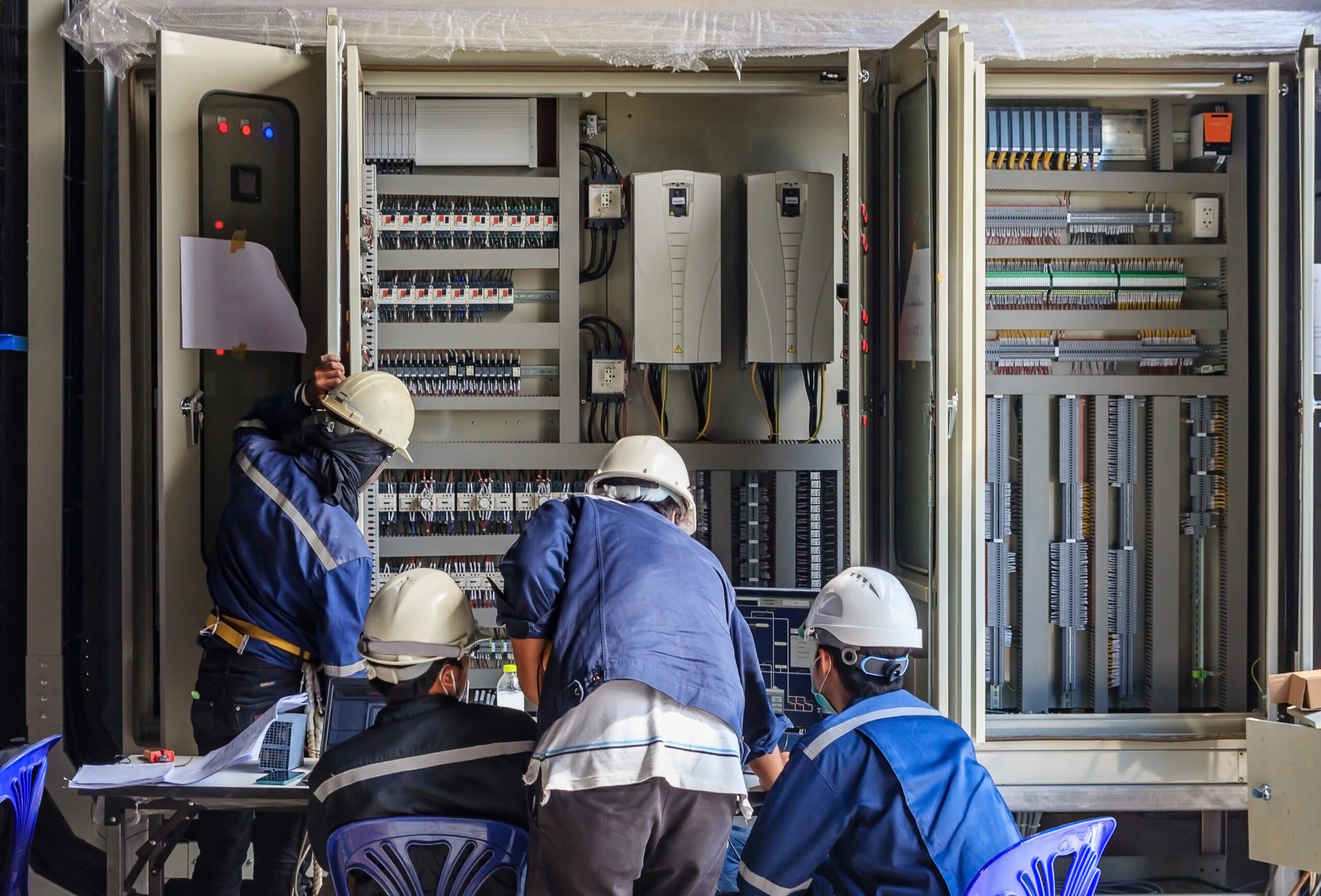
Though they’re often used in highly durable scales and heavy equipment, load cells themselves are somewhat delicate, and can easily be damaged by surrounding elements. This is what makes hermetic sealing so important. Hermetically sealed load cells are air- and water-tight, protecting the delicate measurement components inside from damage. In this blog post, we’ll explain further what hermetically sealed load cells are, why they’re important, and how you can ensure that your load cells are sealed properly.
Hermetically Sealed Load Cells Explained
What is a Hermetically Sealed Load Cell?
A hermetically sealed load cell is an air- and water-tight weighing instrument. The load cell is contained by a welded seal around the gauge, which prevents dust, moisture and other materials from disrupting it. The connecting cable also uses a welded header to maintain the seal.
Hermetic sealing is slightly different for a capacitive load cell compared to a strain gauge load cell, which we will explain later in the blog post, however the principal of completely sealing the weighing elements remains the same.
Are Hermetically Sealed Load Cells Necessary?

Load cells, including both strain gauge load cells and capacitive load cells, can be disrupted by changes in conductivity. This means that any conductive element can contaminate the load cell, and disrupt the measurement, or cause the cell to stop working all together. The load cell may be exposed to many different conductive materials, the most common being simply water. The inner workings of the load cell are very delicate, and can be damaged by water from washing down equipment, contact with other liquids used in the process, or even changes in humidity.
Other conductive materials such as metallic dust or salt can also disrupt the load cell. Finally, corrosive chemicals and vapors can erode the exterior and damage the load cell. Hermetically sealed load cells made from laser-welded stainless steel offer the best protection from all of these threats.
If you are washing your equipment, or it is exposed to salt, metallic dust, notable changes in humidity, corrosive chemicals or chemical vapors, hermetically sealed load cells are necessary. The load cell will last longer, and it won’t need to be recalibrated or replaced as often as a non-sealed cell. The additional cost of hermetic sealing will be lower than the costs associated of repeated maintenance and replacement of a non-sealed cell. A non-sealed cell is also at much greater risk of sudden failure, which can cause expensive downtime.
Hermetically Sealed Load Cell Technology: Strain Gauge vs Capacitance

In a strain gauge load cell, the strain gauges themselves are comprised of arrangements of thin, conductive metal and an insulated backing, which are very delicate. The fine interconnecting wires and electrical circuits measuring resistance are also very fragile. These components depend on electrical conductance to work, so any conductive material can contaminate the load cell and disrupt the measurement. This includes water and moisture in the air, as well as conductive dust. If the load cell is not hermetically sealed, water, dust, and even changes in humidity can damage it. The external output must also be directly connected to the load cell, so this connection area must also be hermetically sealed. This is the most common area where a hermetic seal might fail.

A capacitive load cell uses capacitance instead of conductance to measure the load. In a capacitive load cell, a change in charge between two metal places and a dielectric material in between measures the load. These elements can also be disrupted by conductive materials. The capacitive load cell, however, can be more easily self-contained, since it does not require complex circuits, namely a Wheatstone bridge, to measure resistance. A capacitive load cell also uses a coaxial cable for an external output, which is separated from the hermetically sealed load cell itself. This means seal around the external output does not endanger the hermetic seal of the load cell. A coaxial cable connection is also less prone to connection interruption and damage. For these reasons, hermetically sealed capacitive load cells offer more advantages in many risky environments.
Learn more about digital capacitive load cells »
How to Detect an Low-Quality Hermetic Seal
As previously discussed, the best type of hermetically sealed load cell is made from laser welded stainless steel. Some believe that a stainless steel load cell is adequately sealed and protected by itself, but only hermetic sealing will completely protect the load cell.
For strain gauge load cells, the output should also have a welded cable header. In some cases, the cable may be sealed using foam, adhesive, or epoxy. While these may provide adequate protection for a time, they will eventually break down and expose the load cell to dust and moisture. A welded cable header and seal will not break down prematurely and it will prevent dust and moisture from building up in cracks or pockets.
Hermetically sealed load cells are requirements in many facilities, and advantageous in most others. There are many different types of load cells that can be hermetically sealed, including many different designs, configurations, weights and tolerances. With a high-quality hermetically sealed load cell included in your weighing system, you can extend the life of your machine and reduce maintenance and risks. Download the brochure to learn more about hermetic load cells.







